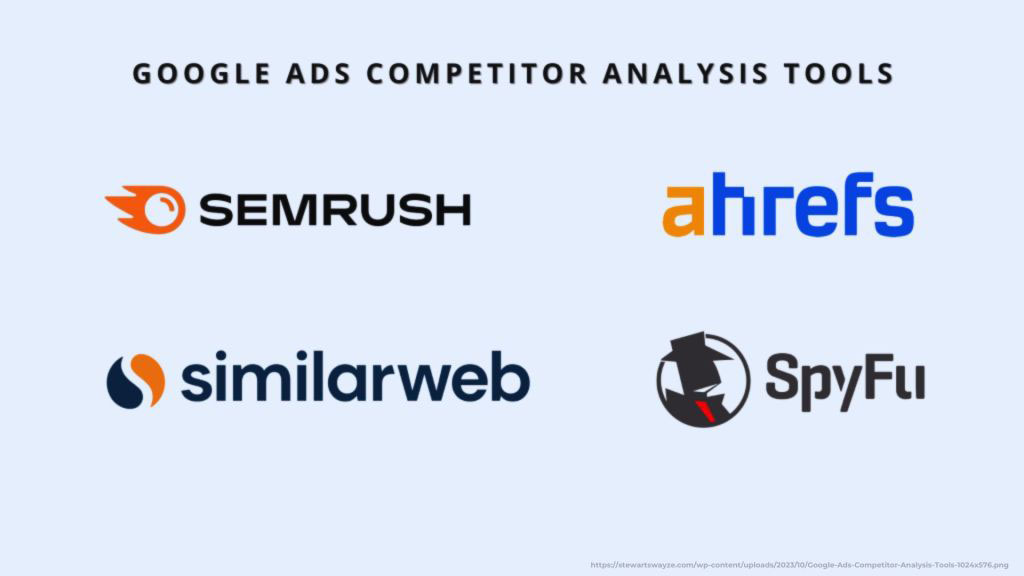Your website is your storefront in the busy digital world, and like any competitive market, success depends on knowing your competitors. However, how well-versed in your rivals are you? In terms of visibility, traffic, or conversions, are they surpassing you? Analyzing competitor websites gives you a magnifying glass to see the advantages and disadvantages of your rivals’ online presence, allowing you to plan and remain competitive. Imagine competing in a marathon without knowing the pace of the other runners—how could you hope to win? In this, we will dive deep into the significance of competitor website analysis and how you can leverage it to enhance your digital strategy.
What is Competitor Website Analysis?
Competitor website analysis is a comprehensive process of evaluating your competitors’ websites to understand their strengths, weaknesses, strategies, and overall market positioning. This process involves examining various aspects such as website design, content, SEO strategies, user experience, etc. Doing so lets you learn their tactics’ strengths and weaknesses and adjust your approach appropriately.
Why is Competitor Website Analysis Essential for Your Business?
Identify Market Trends and Opportunities
- Analyzing competitor websites helps you spot emerging trends in your industry. By observing your competitors’ focus, you can identify new opportunities you might have missed. This could be in the form of content themes, new services, or even untapped customer segments.
Enhance Your SEO Strategy
- One of the critical aspects of competitor website analysis is understanding the SEO tactics your competitors are using. This includes keywords they rank for, backlink profiles, and content strategies. You can find holes in your plan and make the required changes to raise your search engine rankings by analyzing their SEO tactics.
Understand User Experience (UX) Best Practices
- A competitor’s website can offer a wealth of information on user experience. Please pay attention to how their website is structured, the ease of navigation, page load speeds, and mobile responsiveness. These elements are crucial for retaining visitors and ensuring a positive experience, which can significantly impact your conversion rates.
Refine Your Content Strategy
- Content is king in the digital world, and your competitors’ content can explain what resonates with your target audience. By analyzing their blog posts, videos, infographics, and social media content, you can determine what types of content drive the most engagement. This insight can help you create more compelling content for your audience.
Benchmarking and Performance Measurement
- Regular competitor website analysis allows you to benchmark your performance against competitors. Metrics like traffic, conversion rates, and social media engagement can be tracked to see how you are doing compared to other businesses in your sector. This will help you set realistic goals and track your progress over time.
Key Steps in Conducting Competitor Website Analysis
Identify Your Competitors
- The first step is to identify who your real competitors are. These businesses cater to the same clientele and provide comparable goods and services. Use tools like Google Search, SEMrush, or Ahrefs to find which websites rank for your keywords.
Analyze Website Structure and Design

- Look at your competitors’ websites’ layout, design elements, and overall aesthetic. Is their design user-friendly? Do they use colors and typography effectively? Is their website mobile-responsive? These factors can significantly impact user engagement and should be carefully analyzed.
Evaluate SEO Performance
- SEO is a critical component of competitor website analysis. Use tools like Moz, SEMrush, or Ahrefs to analyze your competitors’ SEO strategies. Check their keyword rankings, backlink profiles, and on-page optimization techniques. Understanding their SEO strengths and weaknesses can help you improve your strategy.
Assess Content Quality and Strategy
- Content analysis involves evaluating your competitors’ content’s type, quality, and frequency. Are they focusing on blogs, videos, or infographics? How often do they update their content? What are their most popular pieces? This information can help refine your content strategy to engage your audience better.
Review Social Media Presence
- Social media is an extension of a website’s brand , and analyzing your competitors’ social media activities is essential to competitor website analysis. Look at their engagement levels, the types of content they share, and how they interact with their audience. This can provide insights into what works well on social platforms and how to improve your social media strategy.
Monitor Performance Metrics
- Use analytics tools to track your competitors’ performance over time . This includes metrics like website traffic, bounce rates, and conversion rates. You can learn about your competitors’ performance and pinpoint opportunities for improvement by keeping an eye on these data.
Common Tools for Competitor Website Analysis
SEMrush
- SEMrush is a powerful tool for conducting in-depth competitor website analysis. It provides insights into your competitors’ keyword rankings, backlink profiles, and overall SEO performance.
Ahrefs
- Ahrefs is another popular tool that comprehensively analyzes your competitors’ websites . It provides data on keyword rankings, content performance, and backlink profiles.
Moz
- Moz offers a collection of tools for SEO and rival website analysis. It provides insights into keyword rankings, on-page optimization, and domain authority.
Google Analytics
- While primarily used for tracking your website’s performance , Google Analytics can also gain insights into your competitors’ traffic sources, user behavior, and conversion rates.
Turning Insights into Action
Analyzing rival websites is a continuous exercise that should be included in your digital marketing plan rather than a one-time assignment. By closely watching and evaluating your rivals, you can remain on top of trends, spot new chances, and improve your plan to get more significant results. Recall that the objective is to get knowledge from your rivals and incorporate those insights into your business environment rather than to imitate them.
Are you ready to take your digital marketing strategy to the next level? Explore how OCH> , a creative digital marketing company, can help you leverage competitor website analysis for sustained growth and success. Contact us today to learn more!



